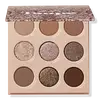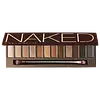What's inside
What's inside
 Key Ingredients
Key Ingredients

 Benefits
Benefits

 Concerns
Concerns

 Ingredients Side-by-side
Ingredients Side-by-side

Synthetic Fluorphlogopite
Talc
AbrasiveBoron Nitride
AbsorbentZinc Stearate
Cosmetic ColorantLauroyl Lysine
Skin ConditioningMagnesium Stearate
Cosmetic ColorantDimethicone
EmollientCaprylic/Capric Triglyceride
MaskingSilica
AbrasivePhenoxyethanol
PreservativeCaprylyl Glycol
EmollientDimethiconol
EmollientEthylhexylglycerin
Skin ConditioningHexylene Glycol
EmulsifyingCI 75470
Cosmetic ColorantIron Oxides
Mica
Cosmetic ColorantCI 77891
Cosmetic ColorantCI 42090
Cosmetic ColorantPolymethylsilsesquioxane
CI 16035
Cosmetic ColorantEthylhexyl Isononanoate
EmollientTrimethylsiloxysilicate
EmollientDimethicone Crosspolymer
Emulsion StabilisingIsopropyl Myristate
EmollientCetyl Dimethicone
EmollientTin Oxide
AbrasiveStearalkonium Hectorite
Gel FormingPropylene Carbonate
SolventCI 77000
Cosmetic ColorantCI 77400
Cosmetic ColorantCI 77491
Cosmetic ColorantAluminum Calcium Sodium Silicate
CI 77163
Cosmetic ColorantTitanium Dioxide
Cosmetic ColorantCalcium Sodium Borosilicate
Magnesium Myristate
Calcium Aluminum Borosilicate
Aluminum Starch Octenylsuccinate
AbsorbentSynthetic Fluorphlogopite, Talc, Boron Nitride, Zinc Stearate, Lauroyl Lysine, Magnesium Stearate, Dimethicone, Caprylic/Capric Triglyceride, Silica, Phenoxyethanol, Caprylyl Glycol, Dimethiconol, Ethylhexylglycerin, Hexylene Glycol, CI 75470, Iron Oxides, Mica, CI 77891, CI 42090, Polymethylsilsesquioxane, CI 16035, Ethylhexyl Isononanoate, Trimethylsiloxysilicate, Dimethicone Crosspolymer, Isopropyl Myristate, Cetyl Dimethicone, Tin Oxide, Stearalkonium Hectorite, Propylene Carbonate, CI 77000, CI 77400, CI 77491, Aluminum Calcium Sodium Silicate, CI 77163, Titanium Dioxide, Calcium Sodium Borosilicate, Magnesium Myristate, Calcium Aluminum Borosilicate, Aluminum Starch Octenylsuccinate
Acrylates Crosspolymer
AbsorbentAscorbyl Palmitate
AntioxidantCI 77163
Cosmetic ColorantCera Microcristallina
Emulsion StabilisingCeresin
Emulsion StabilisingChromium Hydroxide Green
Hydrogenated Cottonseed Oil
EmollientIron Oxides
Methylparaben
PreservativePolyethylene Terephthalate
Propylparaben
PreservativeSimmondsia Chinensis Seed Oil
EmollientCobalt Titanium Oxide
Skin ConditioningTocopherol
AntioxidantCI 19140
Cosmetic ColorantZinc Stearate
Cosmetic ColorantCI 42090
Cosmetic ColorantCyclopentasiloxane
EmollientMica
Cosmetic ColorantOzokerite
Emulsion StabilisingSodium Dehydroacetate
PreservativeBronzite Powder
Cosmetic ColorantEthylhexyl Palmitate
EmollientParaffin
PerfumingSorbic Acid
PreservativeC11-12 Isoparaffin
Skin ConditioningCI 75470
Cosmetic ColorantCI 77510
Cosmetic ColorantPhenoxyethanol
PreservativePolybutene
Talc
AbrasiveTin Oxide
AbrasiveAcrylates Crosspolymer, Ascorbyl Palmitate, CI 77163, Cera Microcristallina, Ceresin, Chromium Hydroxide Green, Hydrogenated Cottonseed Oil, Iron Oxides, Methylparaben, Polyethylene Terephthalate, Propylparaben, Simmondsia Chinensis Seed Oil, Cobalt Titanium Oxide, Tocopherol, CI 19140, Zinc Stearate, CI 42090, Cyclopentasiloxane, Mica, Ozokerite, Sodium Dehydroacetate, Bronzite Powder, Ethylhexyl Palmitate, Paraffin, Sorbic Acid, C11-12 Isoparaffin, CI 75470, CI 77510, Phenoxyethanol, Polybutene, Talc, Tin Oxide
 Reviews
Reviews

Ingredients Explained
These ingredients are found in both products.
Ingredients higher up in an ingredient list are typically present in a larger amount.
Ci 42090 is a synthetic dye created from petroleum. It is used to give a bright blue color to cosmetics, medicine, and food.
Ci 75470 is a bright-red pigment. It is AKA carmine.
Carmine is derived from insects such as the cochineal beetle. This ingredient has been used as a natural dye for over 2000 years.
This synthetic powder is used to add a pearly/white color in cosmetics.
Mica is a naturally occurring mineral used to add shimmer and color in cosmetics. It can also help improve the texture of a product or give it an opaque, white/silver color.
Serecite is the name for very fine but ragged grains of mica.
This ingredient is often coated with metal oxides like titanium dioxide. Trace amounts of heavy metals may be found in mica, but these metals are not harmful in our personal products.
Mica has been used since prehistoric times throughout the world. Ancient Egyptian, Indian, Greek, Roman, Aztec, and Chinese civilizations have used mica.
Learn more about MicaPhenoxyethanol is a preservative that has germicide, antimicrobial, and aromatic properties. Studies show that phenoxyethanol can prevent microbial growth. By itself, it has a scent that is similar to that of a rose.
It's often used in formulations along with Caprylyl Glycol to preserve the shelf life of products.
Talc is a clay mineral. It helps absorb moisture and improve the texture of products. Like other types of clay, Talc can have a slight exfoliating effect on skin. Talc can be added to increase the volume of products.
Some Baby powders are made by combining talc with corn starch. The word "talc" comes from Latin and originates from Arabic. Talc is a mineral commonly found throughout the world.
If you have any concerns about using talc, we recommend checking out the FDA's official page.
Learn more about TalcTin Oxide is an inorganic oxide used to add opacity and volume to a product. In nature, it is already found in mineral form. The main ore of tin is an opaque and shiny mineral called casseterite.
Tin Oxide helps remove translucency in a product, or make it more opaque. Besides adding opacity, tin oxide is used for bulking to add volume.
Zinc Stearate is the metal salt of stearic acid. It is a white solid used to bind, thicken, and lubricate products.
This ingredient is common in powder makeup, where it helps keep the powder together.
Zinc Stearate is hydrophobic and repels water.
This ingredient can be sourced from non-animal or animal sources. It is best to reach out to the brand to see where they source this ingredient from.
Learn more about Zinc StearateThis ingredient is a combination of red, black, and yellow iron oxide pigments. This combination of colors is usually found in foundation, because it results in a "skin" color.